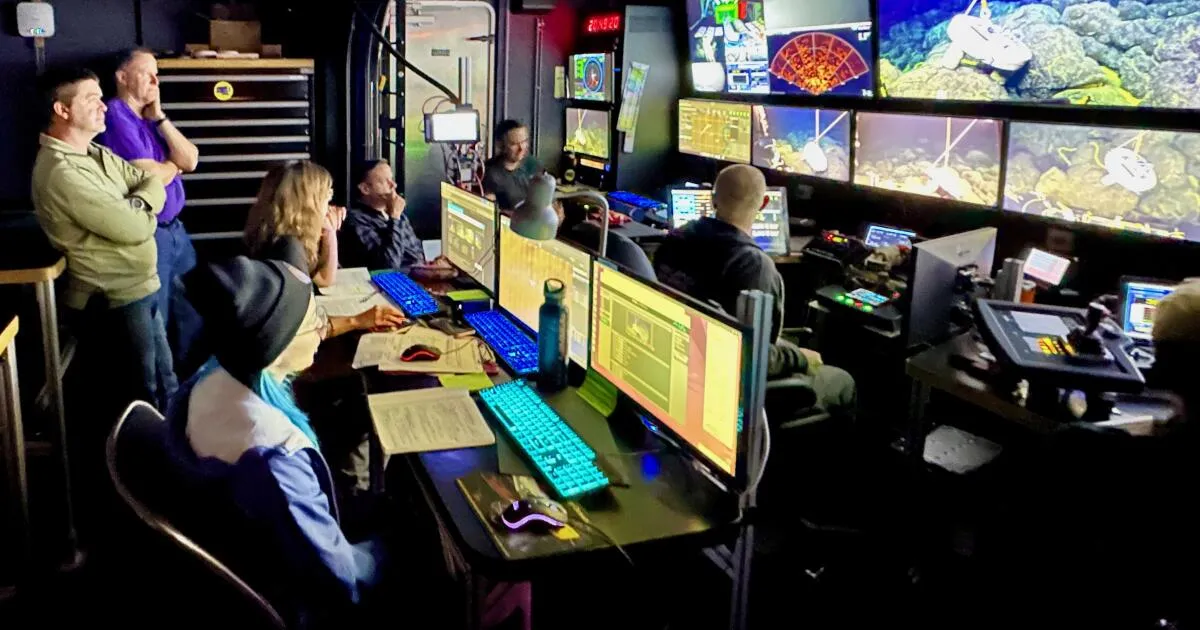
A mysterious and highly active undersea volcano located off the Pacific Coast, known as Axial Seamount, is under close observation by scientists, who predict it could erupt by the end of this year. Approximately one mile deep and situated about 700 miles northwest of San Francisco, this submarine volcano has garnered attention since its discovery in the 1980s. With a history of eruptions in 1998, 2011, and 2015, researchers are now monitoring it more closely than ever.
Axial Seamount is located in a dark region of the northeast Pacific Ocean. According to Bill Chadwick, a research associate at Oregon State University and a leading expert on this volcano, it does not pose a tsunami risk to residents of California, Oregon, and Washington because its eruptions are not explosive. Chadwick explains, “Mt. St. Helens, Mt. Rainier, Mt. Hood, Crater Lake — those kinds of volcanoes have much more gas and are more explosive in general. Axial is more akin to the volcanoes found in Hawaii and Iceland, where the lava is more fluid and less gas is involved.”
The destructive power of explosive eruptions is well-documented. Historical events such as the eruption of Mt. Vesuvius in 79 AD, which destroyed Pompeii, and the 1980 eruption of Mt. St. Helens, which resulted in 57 fatalities, highlight the dangers posed by such geological phenomena. In contrast, Axial Seamount's eruptions are characterized by the slow ooze of lava, similar to that observed at Kilauea on the Big Island of Hawaii. This means that while underwater eruptions may generate heat plumes that rise significantly, they do not reach the surface and are not noticeable to those on land.
Although underwater eruptions may not impact surface-dwelling marine life like whales, they can have devastating effects on sea life that resides near the seafloor. Lava flows can bury organisms, and the heat generated can threaten scientific instruments installed around the volcano that monitor seismic activity. However, the likelihood of triggering a significant earthquake, such as a feared magnitude 9.0 event on the Cascadia subduction zone, is low due to Axial Seamount's distance from this major fault line.
Axial Seamount is one of many underwater volcanoes, with scientists estimating that approximately 80% of Earth's volcanic activity occurs beneath the ocean. This volcano is particularly noteworthy due to its location on a tectonic ridge where the Juan de Fuca and Pacific tectonic plates diverge, creating new seafloor. Additionally, it sits above a geological hotspot, where superheated magma rises toward the Earth's surface. Its frequent eruptions provide researchers with valuable insights and opportunities to predict volcanic activity weeks to months in advance, a challenging feat with many land-based volcanoes.
Researchers have observed a pattern in the behavior of Axial Seamount, where the volcano slowly inflates between eruptions, causing the seafloor to rise. During an eruption, the seafloor drops as magma escapes, akin to releasing air from a balloon. Chadwick and fellow scientist Scott Nooner successfully predicted the 2015 eruption seven months in advance by monitoring this inflation pattern. However, recent activity has shown a slowing inflation rate, making predictions for future eruptions more challenging.
As of late 2023, scientists have noted a renewed inflation of the seafloor, prompting updated predictions about an impending eruption. Chadwick and Nooner's latest forecast, posted on their blog in July 2024, suggests that Axial Seamount may erupt by the end of the year. While seismic data indicates that an eruption is not imminent, Chadwick stressed that the predictions remain experimental, albeit transparent to the public. The unique nature of Axial Seamount's eruptions means there is minimal risk for people on land, allowing scientists to refine their forecasting methods without fear of public backlash.
Efforts to capture the eruption of Axial Seamount will rely on the National Science Foundation-funded Ocean Observatories Initiative, which provides a network of sensors operated by the University of Washington. However, capturing the event on film poses logistical challenges, as researchers must be at the right place at the right time. Chadwick highlighted the difficulties in scheduling research vessels, noting that he last visited the volcano in 2024 and is not expected to return until summer 2026.
In conclusion, the ongoing study of Axial Seamount offers a unique opportunity to enhance our understanding of undersea volcanic activity and refine prediction models for future eruptions. As scientists continue to monitor this intriguing underwater volcano, the knowledge gained may provide insights applicable to more hazardous volcanic sites around the globe.